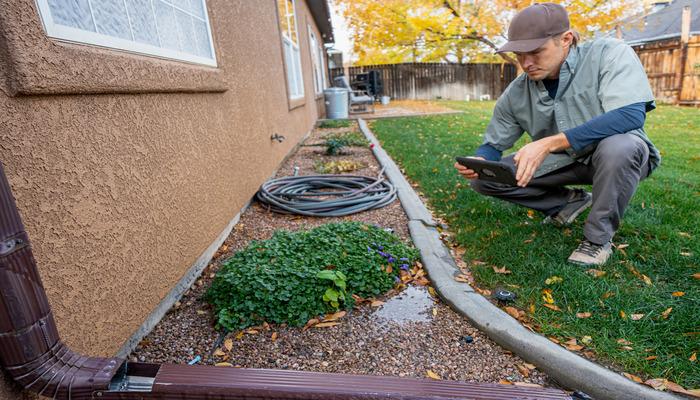After PCSing many times during my 26 years of marriage to my service member, I can attest that no two moves were the same. Each move brought unique challenges and insights that I hope can help you with your next PCS.
My service member had a whole list of his own tasks to complete for his current job and for his new position, on top of moving his family to a new location. So, how could I help him and our family have a positive new journey? What I have learned throughout our military life, is that no two moves were alike.
Learning from each one and creating a buildable family binder of important documents and compiled checklists to have at my fingertips made for a smoother transition the next time.
Please allow me to share with you my best practices. You might find them to be helpful as it is never too early to be prepared for that next move.
My List of Best Practices
- Share Expectation - The first thing in our family was to share with each other our expectations. It was important to discuss this next move out loud and to give each other the opportunity to express and own our emotions. We all process in different ways. Try it. This could make for a more solid foundation in your family as you move forward.
- Communicate & Support Your Service Member - My service member had the responsibility of completing his long list of priorities including contacting his new unit while clearing his current installation. As a spouse, you also have a long list to complete. Communication and supporting each other is the key. A good book to begin learning how to communicate well with each other is The Five Love Languages by Dr. Gary Chapman.
- Do Research - I wanted to know about the geographical area, the housing, the schools, and the job industry. Where did my husband say we were moving to? Have I ever heard of that place?
- Discuss Housing - One of the first questions I would ask my husband was, “Is there available housing on post?”
- Figure Out Transportation - Yes, like many of you, I had to move our family without my service member, more than once. If this is the case for you, make sure you have an updated Power of Attorney. Contact your local transportation office (they have helped me every time.) You may decide to have the government ship your household goods or to do a partial or full DITY move.
A great place to start your research is to check with your service member about a sponsor, the gaining unit’s webpage, the installation’s Family Support Center (especially Relocation Assistance and the School Liaison Officers), and checking with your military spouse network. Another good resource is Military OneSource, especially for OCONUS moves.
I loved living on post! Discuss if your family would like to live on the new installation (check availability with the housing office) or off the installation.
If off the installation, do you want to rent or purchase a house? Veterans United Home Loans has a lot of resources to help you make that decision along with educating you on your Certificate of Eligibility benefit if you choose to purchase a home. Whatever you decide, remember a house is a “home” that you make for your family no matter where you live. I know firsthand that military spouses know how to do just that!
With regards to the former, I have learned to make a spreadsheet of color-coded items the movers will pack, items not to be packed by movers, items to be given away, and items to be consigned at the Thrift Shop. Got to make weight.☺ I also made coordinating signs to attach to the bigger items. Doing this helped me with the challenge of trying to be in every room during moving day. Having that inventory list, which you can include photos and serial numbers, is so helpful before and after each move, and you can keep it in your homemade family binder, too.
- Manage Packing Efforts - Giving your children the responsibility of sorting through their stuff before the move gives them ownership. Letting everyone in your family take some part of the packing process allows them to be part of the team.
There are always a few items, though, you may want to make sure that you personally carry with you, such as your:
- keys
- prescriptions
- records (health, dental, vision, school, child care, pet, church, etc.)
- & other precious valuables to your family
- Be Prepared for Road Trips - It was important to check if the vehicles were ready for our new adventure. Make sure they are serviced (e.g., oil change, tune-up, fluid levels, brakes, tires, battery, lights, first aid kit, etc.) and that the inspections, emissions, insurance, and driver’s licenses were up to date.
- your binder
- E-Z Pass
- a pair of walkie talkies (even with cell phones we still use the walkie talkies).
Don’t forget to bring entertainment and snacks for the kids; treats and necessities for the pets; travel necessities such as:
- Be Aware of Monthly Bills - In my binder is a list of all the organizations that need to be contacted for address changes either online or by phone. I make note of the dates, times, and point of contact when disconnecting our utilities at our old home and setting them up at our new one. I also check all auto payments and allotments. Notifying our bank of our move was important as they track those different out-of-state and country transactions.
- Research Employment Options - If I could talk to my younger self, I would take the time to mentor others (especially my employer) on the great added value of employing a military spouse and creating mobile jobs for us. I, too, have experienced the challenges of maintaining a career and finding a job every time we moved.
I’ve got to quickly share one of my road trip stories:
My husband called me during his fourth tour in Iraq to tell me that he was selected for this new position. I responded, “Oh my gosh, that is great!” and then I immediately asked him, “When are you coming home?”
He replied, “I’m not but you got to move to Fort Eustis.”
“Where is that?” I asked.
He quickly responded, “I got to go. Google it. Love you!”
So I did and then went to the transportation office, gave notice at work, our son’s school, and you know the rest of the drill. I moved our son, two dogs, and a cat across the country just in time to deal with the hurricane. How many miles of playing “I spy with my little eye” can one take? But we survived and you will, too.
This list also includes the post office, insurances (auto, rent, home, life), electric, cable, water, garbage, phone, credit cards, and subscriptions to name a few.
During your move, if you have a financial emergency, do you know your Financial Aid Resources and who to contact? Time to put this in your binder.
Have you researched employment resources for your new location? There are many wonderful military spouse employment resources. My starting recommendations would be the employment programs on your installations, the local Chamber of Commerce (Hiring Our Heroes), Military OneSource, Small Business Association, USAJOBS and the Department of Labor https://www.dol.gov/agencies/vets
- Settle into Your New Home - “Home is where the Army sends us.” Unpacking and setting up our house in a 24 hour period was our family’s goal. Before that, the home security check was first (e.g., working fire extinguishers, smoke detectors, carbon dioxide detectors, locks, security systems, control valves, and panels).
I kept an envelope on our refrigerator that had “In case of an Emergency” written on it. Inside was what I thought was critical information needed for emergency situations such as a list of our family and friends’ contact information, hospital, doctor, dentist, chaplain, veterinarian, who was authorized to pick our son up at school, etc. You could also find on our refrigerator the phone numbers to the local police, fire department, poison control, nurse hotline, and ambulance.
This had the added bonus of teaching our son how to get to know your resources in your new community and start making those connections.
Set up Family Binder - If you decide to start a family binder for your next PCS move some other items you may want to include are:
- birth certificates
- social security cards
- passports
- marriage license
- health/shot records
- orders
- wills
- transportation paperwork
- income taxes
- leases, deeds, titles, and receipts
These items may already be on your computer, however, many times hard copies are required. I find that backing up our computer or laptop, and having a safe to store my binder - along with all our other sensitive documents – is one of the best practices that I can do to help our family (especially during moves.)
Final Thoughts
Even though each move had a different journey, there is one thing I have learned to be constant and true: that you are never alone. It is very important to be informed of your service member’s new unit, the Chaplain, and the Soldier & Family Readiness Group (SFRG). From my own personal experience, if you have not heard from your new SFRG, please be proactive and reach out. They may not be aware that you have arrived yet, or even know your [the spouse’s] contact information.
I always reached out through my husband first. I also realized that attending a unit event gave me the opportunity to provide my contact information, to meet our new Army Family, and to make those life long bonds.
You may already know the importance of creating those trusting relationships, especially when you are new to the area and need to provide emergency contacts for registering your children at school, for child care, for sports programs, etc.
As a dear battle buddy taught me, “Becoming informed is a proactive sport.” Embrace your new location, make that house your home, and “bloom where you are planted.” Most of all, have fun!
Related Posts
-
 VA Construction Loans: How to Build a Home with a VA LoanBuilding your dream home is a possibility with a VA home loan. But it isn’t always an easy road. Here we take a deep dive into VA construction loans and how you can build a home with a VA loan.
VA Construction Loans: How to Build a Home with a VA LoanBuilding your dream home is a possibility with a VA home loan. But it isn’t always an easy road. Here we take a deep dive into VA construction loans and how you can build a home with a VA loan. -
 VA Appraisal RequirementsExplore everything a homebuyer needs to know about the VA appraisal, including the process, property requirements, pitfalls, termite inspections, water quality checks, appraisal fees, challenging a low appraisal and the differences between the VA appraisal and a home inspection.
VA Appraisal RequirementsExplore everything a homebuyer needs to know about the VA appraisal, including the process, property requirements, pitfalls, termite inspections, water quality checks, appraisal fees, challenging a low appraisal and the differences between the VA appraisal and a home inspection.


